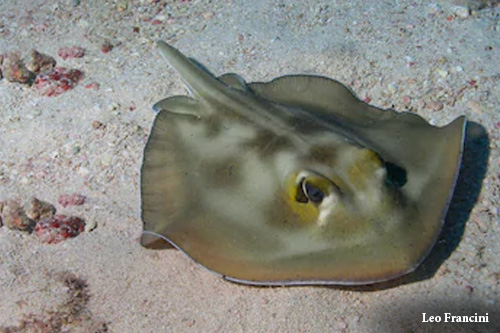Dasyatis marianae
Rays
Environment and movement of the diurnal species
- The species is generally observed in a sandy/silty area.
- The species is generally motionless in its environment
- The species is generally found on or close to the seafloor.
- The species can be found between 2 and 15 Meters.
- Uncommon Species
- Hides in the sand.
- Endemic species.
Environment and movement of the nocturnal species
- The species is generally observed in a sandy/silty area.
- The species is generally seen moving in its environment.
- The species is generally found on or close to the seafloor.
General behaviour of the species
- The species is territorial
- Species generally solitary
- Lives in partnership with other fish species
- Hides in the sand.
- The animal is rather indifferent to the diver, though it remains on its guard
General characteristics of the species
- Maximum size : 40 cm
- The animal is a hunter low in the food chain.
- Diet : Mollusks
- The animal changes colour like a chameleon
Relationship with humans
- The spines of the animal can be dangerous
- The species is in great demand and highly appreciated
- The species is exploited in the following sector(s) :
- - Fishing or commercial aquiculture for food
- -Sport or local fishing
- Used in the clothing, footwear or crafts industries for the manufacture of articles (jewellery, etc.)
The species can be confused with other species of similar appearance!
